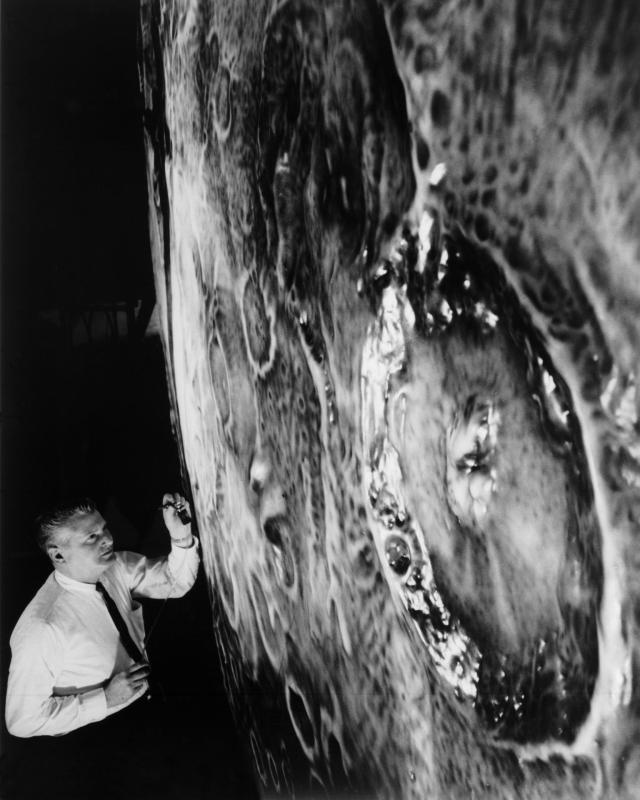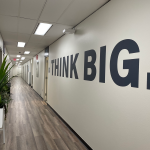Name: Allen Mirkadyrov
Position: Associate branch head
Organization: Telecommunication Networks and Technology Branch, Code 566
Allen Mirkadyrov has given nearly a decade of service to NASA’s Goddard Space Flight Center. He got his engineering start at the United States Air Force Academy in Colorado Springs, Colorado, studying astronautical engineering. He then received his master’s degree in aerospace engineering from San Diego State University. From there, he spent over five years at NASA’s Wallops Flight Facility in Virginia as a space flight systems safety engineer and then transferred to Goddard campus in Greenbelt, Maryland, to oversee the Telecommunications Networks and Technology Branch.
During Mirkadyrov’s time at Goddard, he helped contribute to the future of human spaceflight through the Hawai’i Space Exploration Analog and Simulation, or HI-SEAS, program. His particular mission was an eight-month expedition that studied how mission crews interact with each other and collect data that could be useful for future long-duration missions to Mars.
How did you get selected for the HI-SEAS program?
I learned about it in 2012. I actually saw it online and I applied for the first crew. I wasn’t selected for the first one or the second one. I kept my profile active, and eventually they picked me for the third one.
The program initially picked eight people to go on a 10-day outdoor survival trip in Wyoming. This was the point of the program where you meet your potential crewmates for the first time. I was in the military prior to all of this, so I’ve done several survival trainings in the past; this was nothing new.
What were you studying on your mission?
My mission specifically was HI-SEAS Mission 3. Our primary focus was on crew performance and cohesion in a Mars-like environment in a confined space, which was the dome that we lived in.
The study monitored our daily activities, our daily interactions, our resource management, our power management, among other things. All of this data is important because at the end of the day, if astronauts don’t know how to survive together, the mission is going to fail.
What was it like walking out of your habitat at the end of the mission?
The fresh wind was something welcome because for eight months we breathed oxygen. We had breathable air, but we didn’t have any fresh air. It was surprising to see how you don’t appreciate these things until you get locked up.
The crew also experienced physical changes. Within about 30-35 minutes I got sunburned, and the rest of the crew as well. We were so Vitamin D deficient because we hadn’t seen sun or basically got any of that vitamin; it really burned us up.
What was it like leaving your position for almost a year?
I had to get permission from my management at Wallops to allow me to attend this. Without their approval and their understanding of the importance of the study, this wouldn’t have been possible. I really appreciate my management for giving me the opportunity.
What would you say to someone who wants to follow a similar path as you?
Not everyone gets to become an astronaut. This year’s astronaut class had thousands of applicants and NASA only selected 12. But HI-SEAS is a way for people to help human spaceflight in other ways. That’s why I really encourage people to apply for this program.
My role models have always put an emphasis on education. Do as well as you can in school and don’t be afraid to ask questions. Keep going and reach new heights.
Allen Mirkadyrov completed his HI-SEAS mission in 2015. Today, he oversees a portfolio of more than 30 telecommunications projects in his branch that builds new communications technologies and monitors satellites in space. He said he’s always been interested in the way ground stations talk to other satellites and how a network of satellites relay information to each other.
When he’s not working or catching up with his HI-SEAS crewmates when they come to town, Mirkadyrov said he loves joining in on pickup games of volleyball or basketball. He follows professional basketball and is also looking forward to the upcoming soccer World Cup in 2018.
By Chelsey Ballarte
NASA’s Goddard Space Flight Center, Greenbelt, Md.

Conversations With Goddard is a collection of Q&A profiles highlighting the breadth and depth of NASA’s Goddard Space Flight Center’s talented and diverse workforce. The Conversations have been published twice a month on average since May 2011. Read past editions on Goddard’s “Our People” webpage.


































